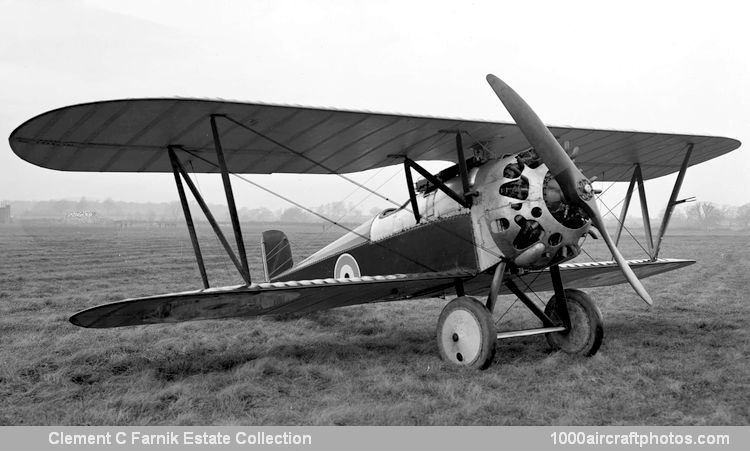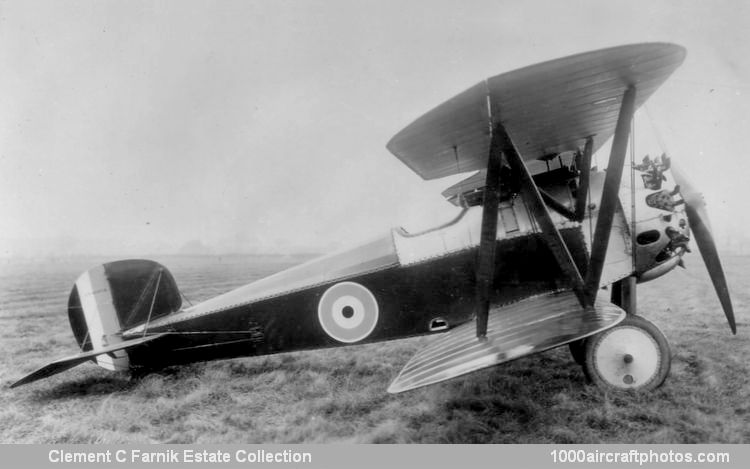Although the second prototype also received the Sunbeam engine, the third (B3991) was fitted with a 347 hp Brazil-Straker Mercury fourteen-cylinder two-row radial engine, and was redesignated Type 21A Scout F.1. Flown for the first time on September 4, 1918 by Cyril Uwins, Bristol company test pilot, the aircraft and engine performed excellent, establishing unofficial climb records in April 1919. However, the end of WW I also ended the development of the aircraft and its engine.
The fourth aircraft was not completed, no. 5 and 6 were not built. Brazil-Straker became Cosmos Engineering in 1918, but went broke in 1919. The assets (including the design team headed by Roy Fedden) were taken over by Bristol, and that started the Bristol Engine Company."
Span: 29 ft 7.5 in (9.03 m)
Length: 20 ft 0 in (6.09 m)
Height: 8 ft 4 in (2.54 m)
Wing area: 260 sq.ft (24,15 sq.m)
Weight empty: 1,486 lb (674 kg)
Max T/O weight: 2,260 1b (1,025 kg)
Max speed: 145 mph (233 kmh) at sea level)
Climb: to 10,000 ft (3,050 m) 5 min 27 sec

